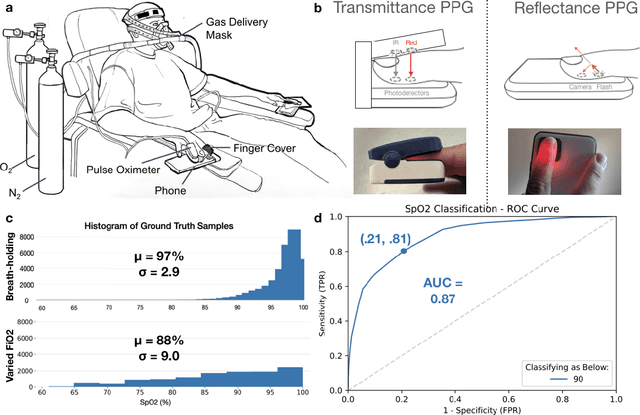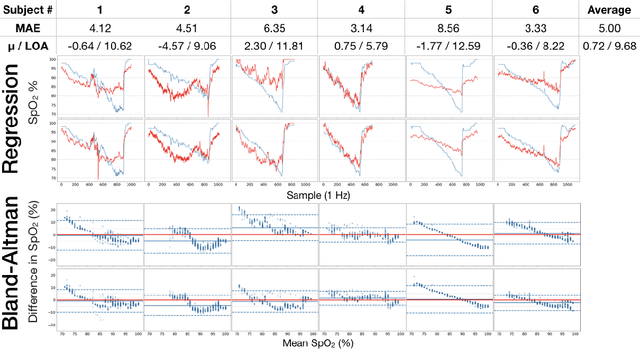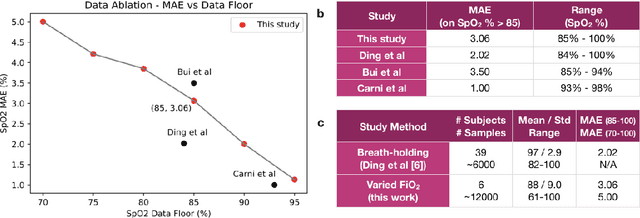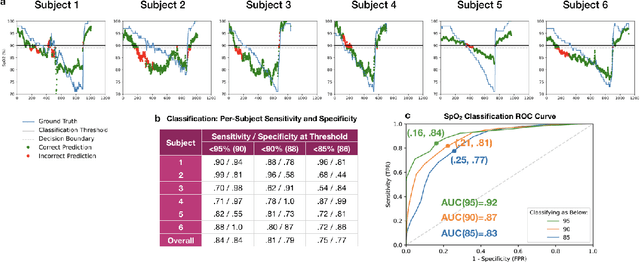Smartphone Camera Oximetry in an Induced Hypoxemia Study
Paper and Code
Mar 31, 2021



Hypoxemia, a medical condition that occurs when the blood is not carrying enough oxygen to adequately supply the tissues, is a leading indicator for dangerous complications of respiratory diseases like asthma, COPD, and COVID-19. While purpose-built pulse oximeters can provide accurate blood-oxygen saturation (SpO$_2$) readings that allow for diagnosis of hypoxemia, enabling this capability in unmodified smartphone cameras via a software update could give more people access to important information about their health, as well as improve physicians' ability to remotely diagnose and treat respiratory conditions. In this work, we take a step towards this goal by performing the first clinical development validation on a smartphone-based SpO$_2$ sensing system using a varied fraction of inspired oxygen (FiO$_2$) protocol, creating a clinically relevant validation dataset for solely smartphone-based methods on a wide range of SpO$_2$ values (70%-100%) for the first time. This contrasts with previous studies, which evaluated performance on a far smaller range (85%-100%). We build a deep learning model using this data to demonstrate accurate reporting of SpO$_2$ level with an overall MAE=5.00% SpO$_2$ and identifying positive cases of low SpO$_2$<90% with 81% sensitivity and 79% specificity. We ground our analysis with a summary of recent literature in smartphone-based SpO2 monitoring, and we provide the data from the FiO$_2$ study in open-source format, so that others may build on this work.
 Add to Chrome
Add to Chrome Add to Firefox
Add to Firefox Add to Edge
Add to Edge